A Thermocouple Amplifier System Based on Linear Technology’s LT1025 – Micropower Thermocouple Cold Junction Compensator combined with the LTC1049 – Low Power Zero-Drift Operational Amplifier with Internal Capacitors this small circuit provides a basic thermocouple amplifier. Simultaneous Analog Voltage and 4-20ma current outputs are available utilizing XTR-117 4-20mA Current-Loop Transmitter
The combination of chips produces a DC voltage signal roughly equal to 10mv per degree C and a fairly linear response due to the “bow” correction built in to the LT1025. The scale of the 4-20ma output is set by adjusting the 10 turn potentiometer.
Four different outputs to support six different thermocouple types (E,J,K,R,S,T).
Compatible with Standard Thermocouples
- Type E Thermocouple
- Type J Thermocouple
- Type K Thermocouple
- Type R Thermocouple
- Type S Thermocouple
- Type T Thermocouple
Power:
- Three power connections available: 3 Pin Herdware Power, dedicated terminal block, 4-20ma line
- 4V to 16V Operation from direct connect power
- 7.5V to 40V Operation from 4-20ma connection
- 8″ Power Cable included
Datasheets:
- LT1025 – Micropower Thermocouple Cold Junction Compensator
- LTC1049 – Low Power Zero-Drift Operational Amplifier with Internal Capacitors
- LTK001f – Thermocouple Amplifier: Cold Junction Compensator and Matched Amplifier
- XTR117 4-20mA Current-Loop Transmitter
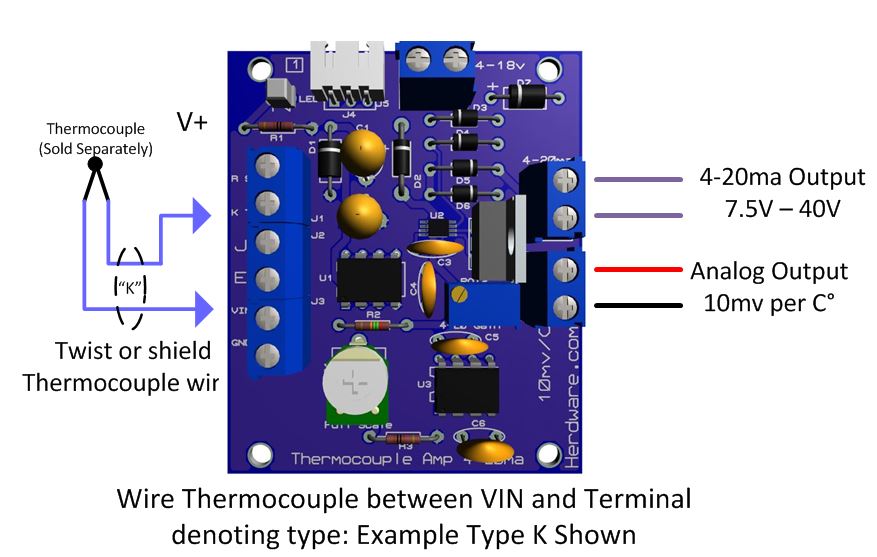
LT1025 Descrition
The LT® 1025 is a micropower thermocouple cold junction compensator for use with type E, J, K, R, S, and T thermocouples and forms a thermocouple amplifier system. It utilizes wafer level and post-package trimming to achieve 0.5°C initial accuracy. Special curvature correction circuitry is used to match the “bow” found in all thermocouples so that accurate cold junction compensation is maintained over a wider temperature range.
The LT1025 will operate with a supply voltage from 4V to 36V. Typical supply current is 80µA, resulting in less than 0.1°C internal temperature rise for supply voltages under 10V. A 10mV/°C output is available at low impedance, in addition to the direct thermocouple voltages of 60.9µV/°C (E), 51.7µV/°C (J), 40.3µV/°C (K, T) and 5.95µV/°C (R, S). All outputs are essentially independent of power supply voltage.
A special kit is available (LTK001) which contains an LT1025 and a custom tailored thermocouple amplifier. The amplifier and compensator are matched to allow a much tighter specification of temperature error than would be obtained by adding the compensator and amplifier errors on a worst-case basis. The thermocouple amplifier from this kit is available separately as LTKA0x.
LT1025 Features
- 80µA Supply Current
- 4V to 36V Operation
- 0.5°C Initial Accuracy (A Version)
- Compatible with Standard Thermocouples (E, J, K, R, S, T)
- Auxiliary 10mV/°C Output
Theory of Operation
A thermocouple consists of two dissimilar metals joined together. A voltage (Seebeck EMF) will be generated if the two ends of the thermocouple are at different temperatures. In Figure 1, iron and constantan are joined at the temperature measuring point T1. Two additional thermocouple junctions are formed where the iron and constantan connect to ordinary copper wire. For the purposes of this discussion it is assumed that these two junctions are at the same temperature, T2.
The Seebeck voltage, VS, is the product of the Seebeck coefficient α, and the temperature difference, T1 – T2; VS = α (T1 – T2). The junctions at T2 are commonly called the cold junction because a common practice is to immerse the T2 junction in 0°C ice/water slurry to make T2 independent of room temperature variations. Thermocouple tables are based on a cold-junction temperature of 0°C. To date, IC manufacturers efforts to make microminiature thermos bottles have not been totally successful. Therefore, an electronically simulated cold-junction is required for most applications.
The idea is basically to add a temperature dependent voltage to VS such that the voltage sum is the same as if the T2 junction were at a constant 0°C instead of at room temperature. This voltage source is called a cold junction compensator. Its output is designed to be 0V at 0°C and have a slope equal to the Seebeck coefficient over the expected range of T2 temperatures.
To operate properly, a cold junction compensator must be at exactly the same temperature as the cold junction of the thermocouple (T2). Therefore, it is important to locate the LT1025 physically close to the cold junction with local temperature gradients minimized.
Thermocouple Amplifier Application Information
In many situations, thermocouples are used in high noise environments, and some sort of input filter is required. (See discussion of input filters). To reject 60Hz pick-up with reasonable capacitor values, input resistors in the 10k-100k range are needed. Under these conditions, bias current for the amplifier needs to be less than 1nA to avoid offset and drift effects.
To avoid gain error, high open loop gain is necessary for single-stage thermocouple amplifiers with 10mV/°C or higher outputs. A type K thermocouple amplifier, for instance, with 100mV/°C output, needs a closed loop gain of ≈2,500. An ordinary op amp with a minimum open loop of 50,000 would have an initial gain error of (2,500)/(50,000) = 5%! Although closed loop gain is commonly trimmed, temperature drift of open loop gain will have a very deleterious effect on output accuracy. Minimum suggested open loop gain for type E, J, K, and T thermocouples is 250,000. This gain is adequate for type R and S if output scaling is 10mV/°C or less
The industry has created standardized classifications of thermocouples that provide engineers with guidelines when selecting the best part for a design (Table 1). As you can see, standard ranges and classifications for thermocouples can operate at temperatures as high as 1,750°C and as low as –250°C. Standard semiconductors and solder materials will not operate or even survive in these extremes.
| Type | Temperature range °C (continuous) | Temperature range °C (short term) |
| K | 0 to +1100 | -180 to +1300 |
| J | 0 to +750 | -180 to +800 |
| N | 0 to +1100 | -270 to +1300 |
| R | 0 to +1600 | -50 to +1700 |
| S | 0 to +1600 | -50 to +1750 |
| B | +200 to +1700 | 0 to +1820 |
| T | -185 to +300 | -250 to +400 |
| E | 0 to +800 | -40 to +900 |
| Chromel/AuFe | -272 to +300 | n/a |
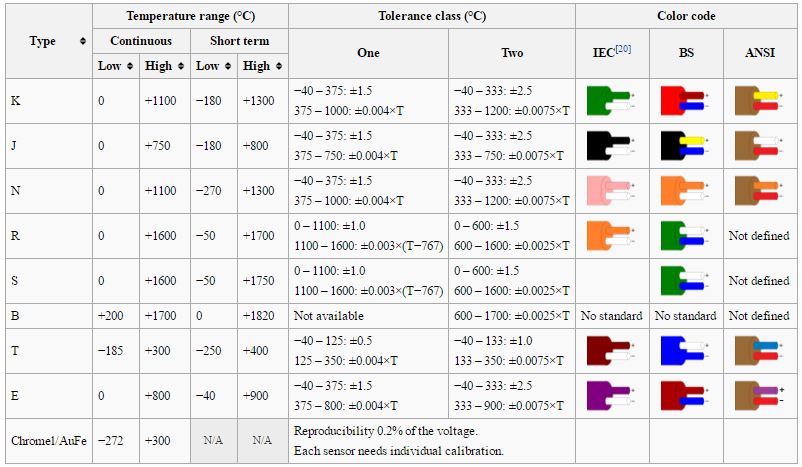
Additional information
| Weight | 0.1 lbs |
|---|---|
| Dimensions | 2 × 2 × 1 in |
You must be logged in to post a review.

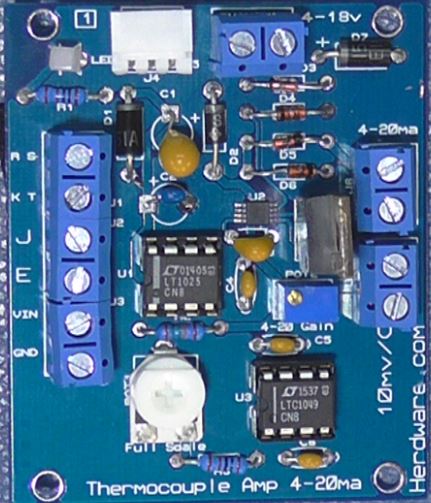
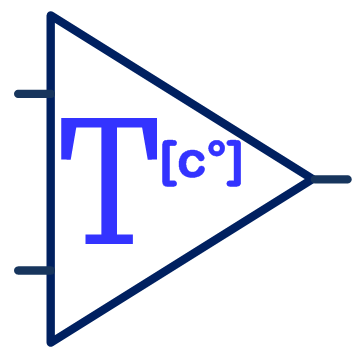
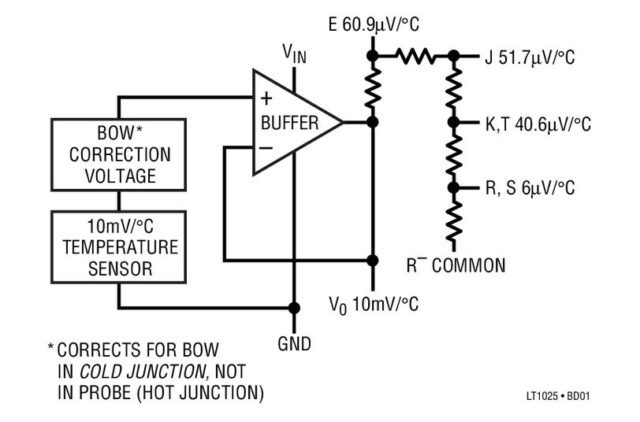
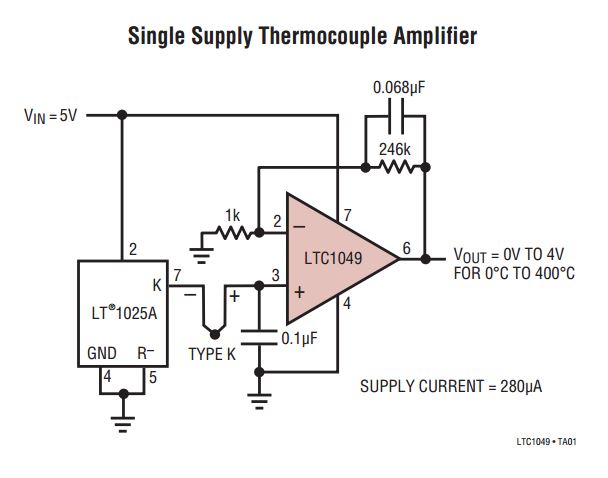
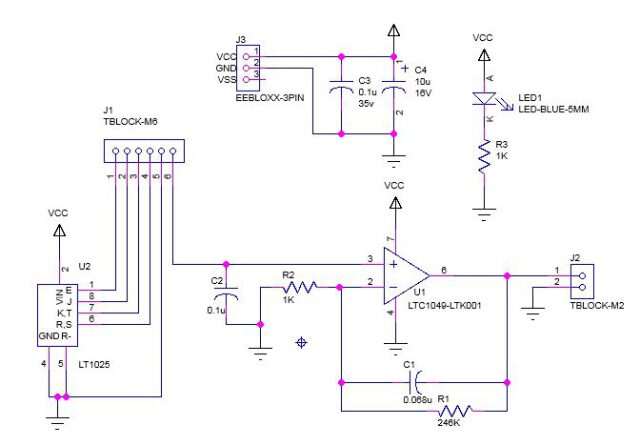
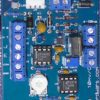
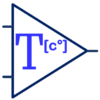
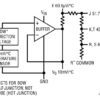
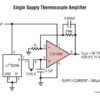
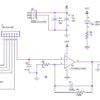
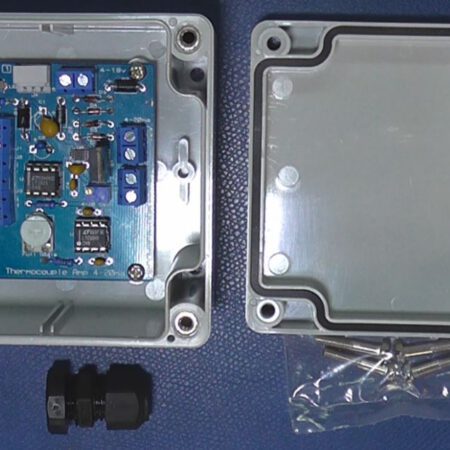
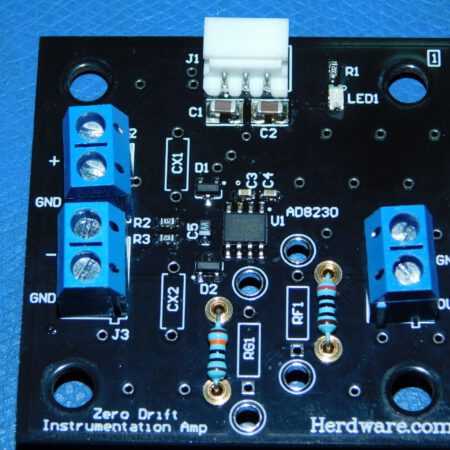

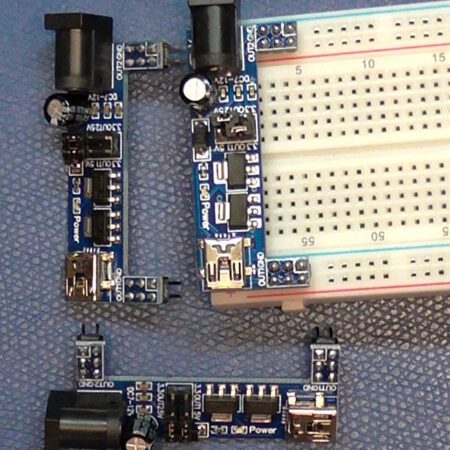
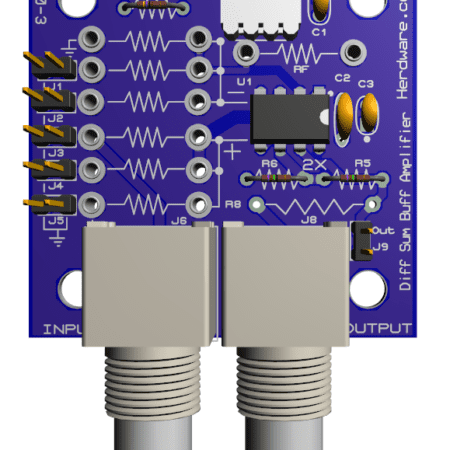
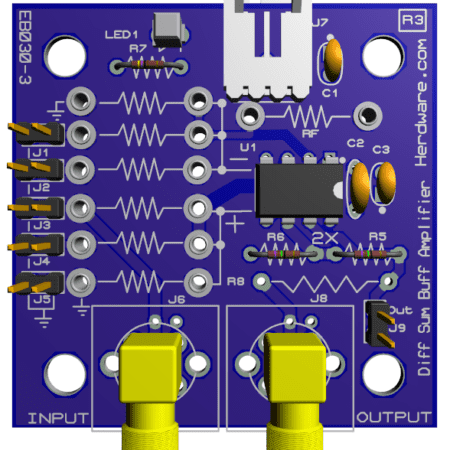


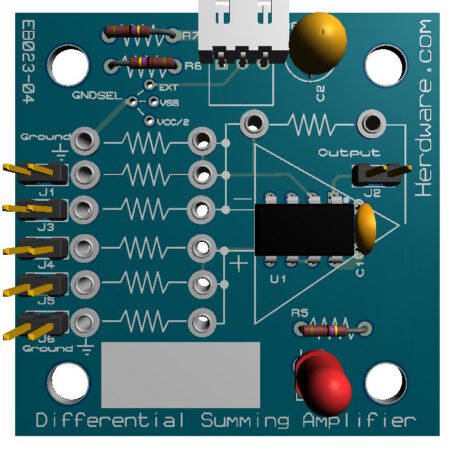
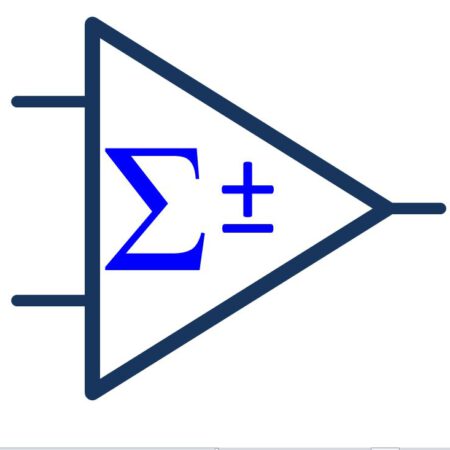
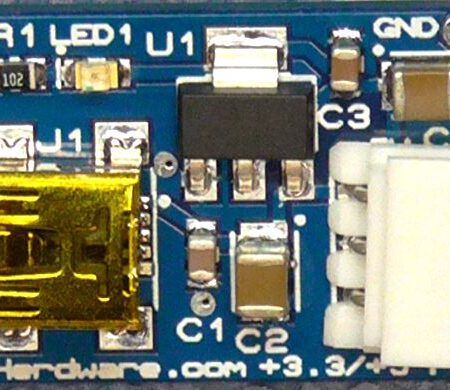
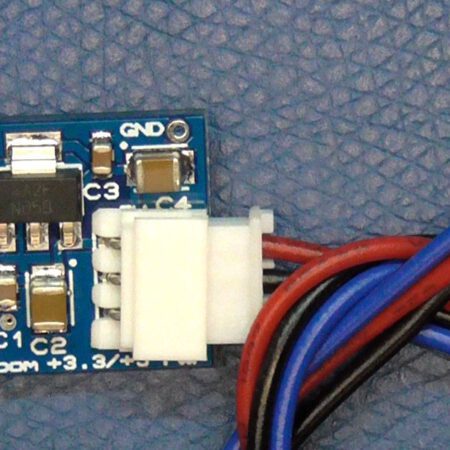

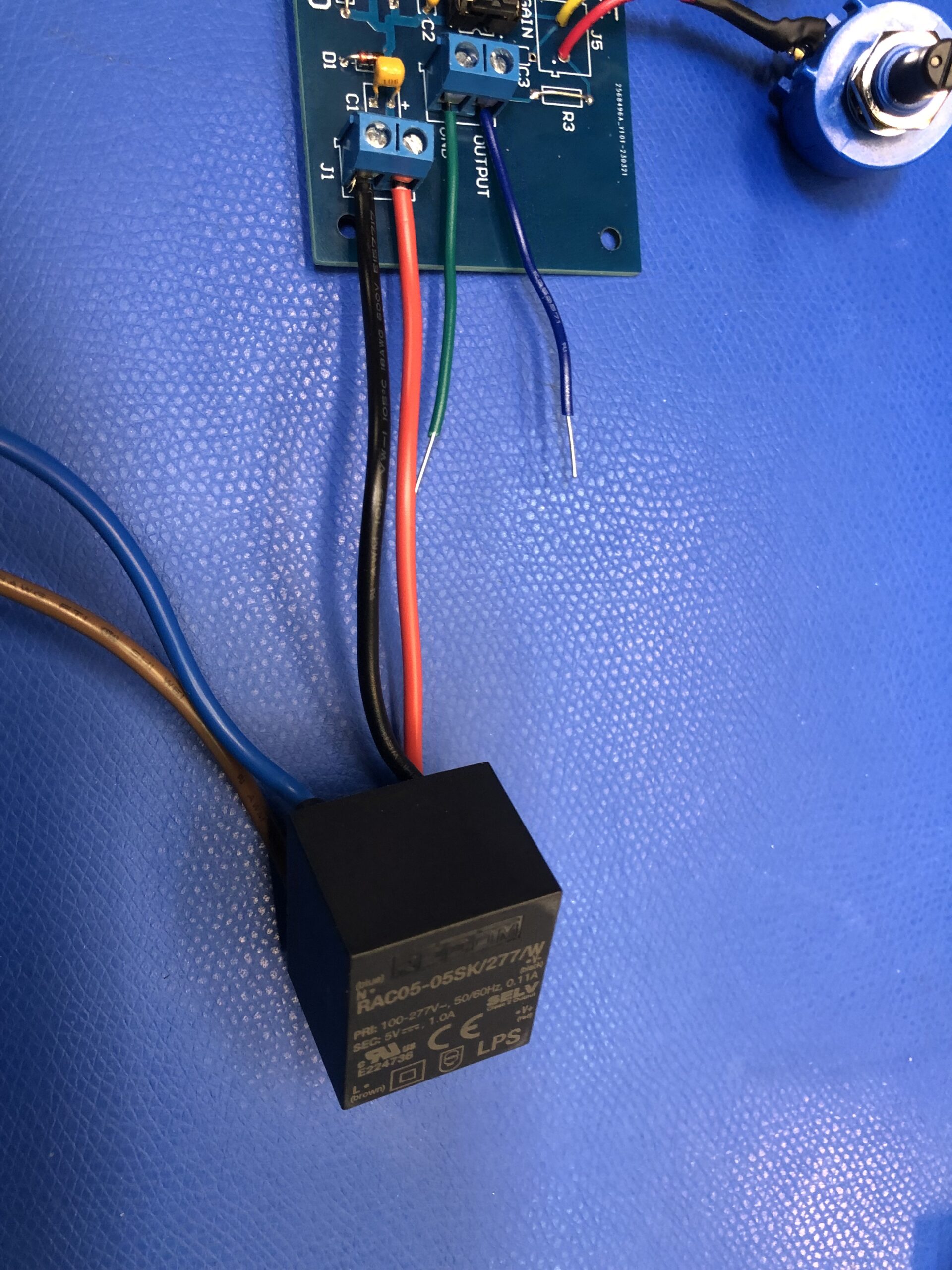
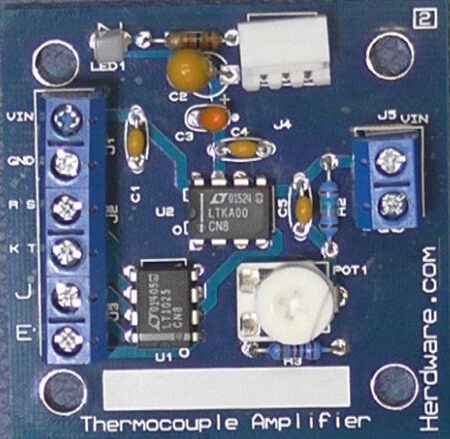
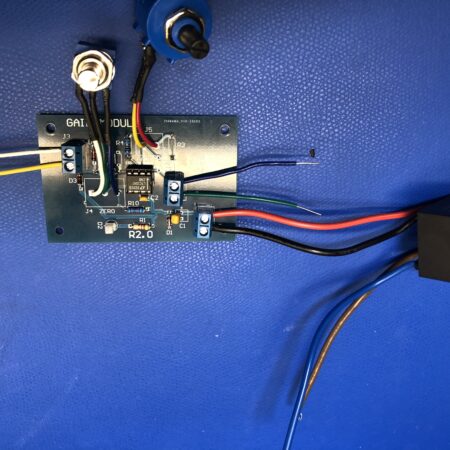
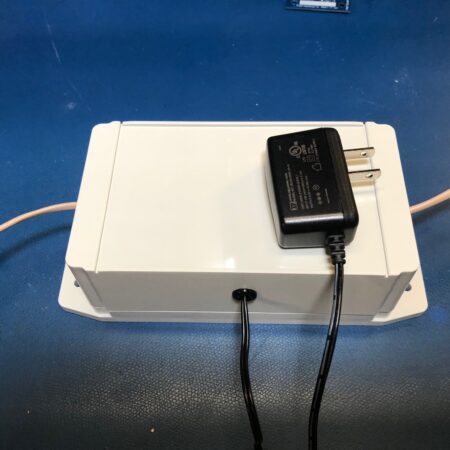
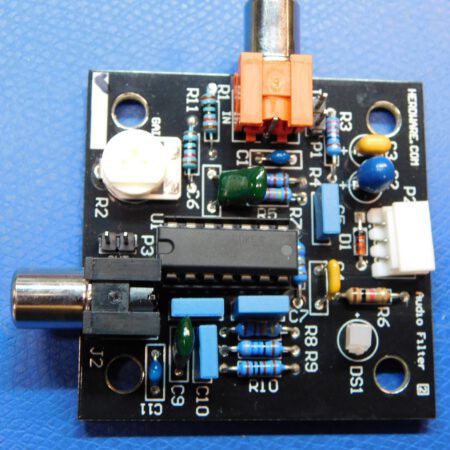
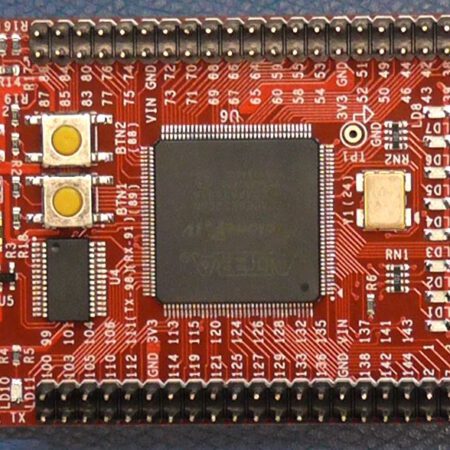
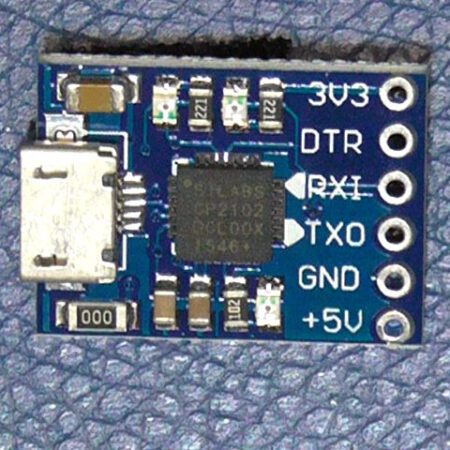
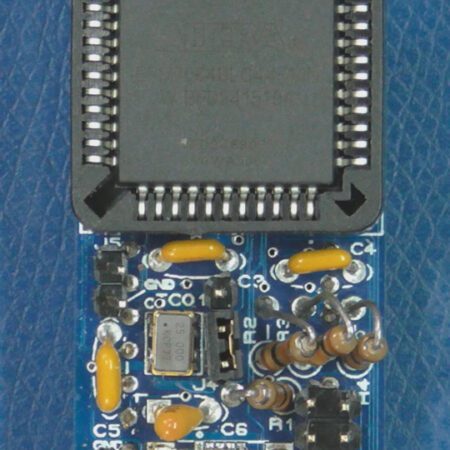
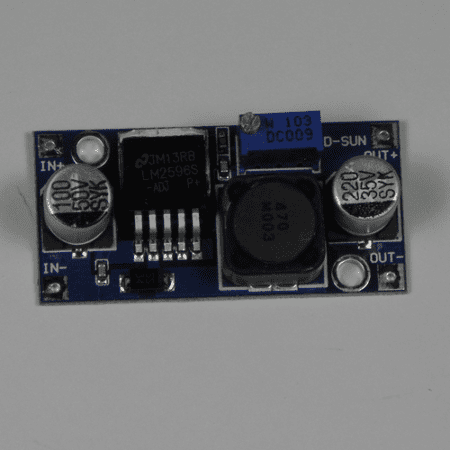
Reviews
There are no reviews yet.